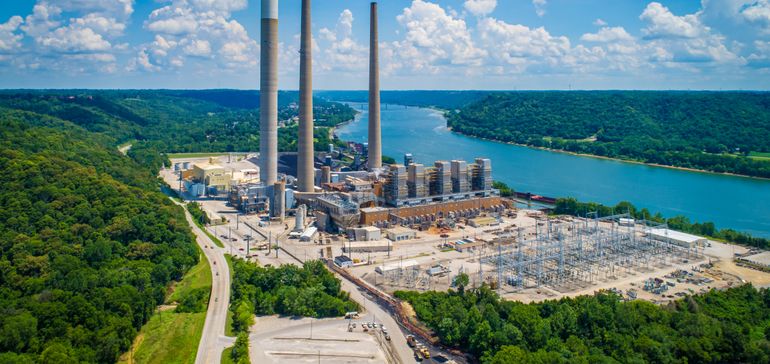Coal plant sites could host 265 GW of advanced nuclear, costing 35% less than greenfield projects: DOE
Dive Brief:
-
About 80% of operating and recently retired coal-fired power plant sites could host an advanced nuclear power reactor, with nearly 265 GW in total potential nuclear capacity, according to a Department of Energy report released Tuesday.
-
Using transmission, switchyard facilities and other infrastructure at the coal plant sites could reduce the overnight cost of capital of a nuclear facility by 15% to 35% compared with a greenfield project, according to the analysis.
-
“Fully decarbonizing the US power grid and producing zero-carbon fuels will require hundreds of GWs in new zero-carbon ‘always available’ energy,” Judi Greenwald, Nuclear Innovation Alliance executive director, said in a statement. “Repowering coal plants with advanced nuclear energy advances decarbonization while taking advantage of a local workforce with experience running energy facilities.”
Dive Insight:
The report comes as states and the federal government are looking for ways to take advantage of transmission lines and other equipment that was built to serve coal-fired power plants, in part to support the communities around the retired or soon-to-be shuttered generating facilities.
Illinois, for example, intends to install a mix of solar and battery storage at 11 retired coal-fired power plant sites while TerraPower is planning on advanced nuclear reactor demonstration project near the coal-fired Naughton plant in Wyoming.
DOE researchers from the Argonne, Idaho and Oak Ridge national laboratories found 190 operating coal plant sites that could host nearly 200 GW of nuclear capacity and 125 recently retired plant sites that could handle about 65 GW of nuclear capacity. There are about 100 GW of existing nuclear capacity in the United States, which account for 8.2% of all US generating capacity, according to the Federal Energy Regulatory Commission.
Coal-to-nuclear, or C2N, projects appear to perform better economically than stand-alone, greenfield nuclear projects, the researchers said.
Also, building nuclear plants at retired coal plant generating stations may provide an economic boost to disadvantaged communities, according to the report.
“The study results suggest economic potential for communities and firms that pursue C2N transitions,” the DOE researchers said. “An implication of this is that there is a potential advantage for interested coal communities to be first movers in what could be a series of many C2N transitions across the United States.”
The researchers’ economic and environmental impact analysis was based on a hypothetical 1,200-MW coal-fired power plant in the Midwest that is replaced with a 924-MW nuclear plant.
That analysis suggests jobs in the region could increase by more than 650 permanent jobs, up from an estimated 150 jobs connected to the coal-fired power plant, the researchers said.
“Swapping out retiring coal-fired power plants with advanced nuclear reactors reduces carbon emissions, improves air quality, and provides economic benefits to communities,” Greenwald said. “It also minimizes situating challenges, reduces or eliminates community and economic impacts due to asset retirement while producing clean and reliable energy.”



Comments are closed.